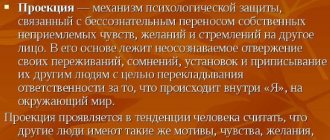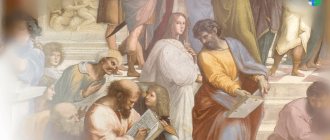Biography
Doctor of Psychological Sciences (1967), Professor (1968). Graduated from the pedagogical faculty of the 2nd Moscow State University (now Moscow Pedagogical State University) (1930). Student L.S. Vygotsky. She worked at the Academy of Communist Education named after. N.K. Krupskaya and Ukrainian Psychoneurological Academy (now the Institute of Neurology, Psychiatry and Narcology of the Academy of Medical Sciences of Ukraine) in Kharkov. From 1948 to 1981, she was an employee of the Research Institute of OiPP of the Academy of Pedagogical Sciences of the USSR (now the Psychological Institute of the Russian Academy of Education), where she defended her Ph.D. Dissertation: “Age-related patterns of formation of a child’s personality.” Until 1978, she headed the laboratory of personality formation [1].
Publications
- Bozhovich L. I. (1929-31/1935). Speech and practical intellectual activity of a child (experimental and theoretical research). Cultural-historical psychology, N 1-3, 2006: [https://vygotsky.mgppu.ru/1192 part 1], [https://vygotsky.mgppu.ru/1254 part 2, 3], [https http://vygotsky.mgppu.ru/1327 part 4]
- Bozhovich L. I. Problems of personality formation: selected psychological works / Ed. D. I. Feldshtein. - Moscow; Voronezh: Institute of Practical Psychology, 1995. ( This book of selected works of an outstanding psychologist includes her main works on psychological patterns and stages of personality development, motivation of children’s behavior, etc.
) - Bozhovich L. I. (1981/1988). [https://www.voppy.ru/issues/1988/885/885108.htm About the cultural-historical concept of L. S. Vygotsky and its significance for modern research in personality psychology]
- Bozhovich L. I. [https://flogiston.ru/library/bozhovich The need for new impressions @ flogiston.ru]
Scientific contribution
One of the main directions of her work is the scientific and psychological substantiation of the education process. The scientific concept of B. was based on a holistic approach to the study of personality. Considering education as a process of purposeful formation and development of personality, B. criticized the position widespread in Russian psychology, which characterizes the psyche as the result of the assimilation (“appropriation”) of social forms of consciousness. She substantiated the thesis that the human psyche develops not so much to the extent of assimilation, but to the extent that the subject changes the reality around him. B. argued that the development of a child has an internal logic, its own laws, and is not a passive reflection of the reality in which it occurs. Summarizing a large amount of empirical material, B. comes to the conclusion that the demands of the social environment will only become factors in the child’s development when they enter the system of his own needs. External demands become their own needs only if they correspond not only to the child’s objective position, but also to his internal position. B. characterizes the latter as a system of needs and aspirations of the child, which develops into a special personal formation and becomes the driving force for the development of new mental qualities (“Personality and its formation in childhood.” 1968). A large place in B.'s research was occupied by the study of the child's motivational-need sphere, in particular, the motives for learning. Two groups of motives were identified and characterized: broad social motives and motives that directly stimulate educational activity, and the features of the relationship between them at different ages were shown. The problem of personal readiness for learning is considered. Using the concept of internal position, B. gave an analysis of the psychological reasons for academic failure and indiscipline: a student’s bad behavior usually arises as a form of protest against the attitude that has developed towards him. She, together with her colleagues, identified and described the phenomenon of a “semantic barrier”, the essence of which is that educational influences are not perceived by the child, because for the teacher and the student the same fact or action has a different meaning. Various types of semantic barriers were characterized and ways to overcome them were outlined, a study of affective forms of behavior was conducted, and the “affect of inadequacy” was described, the essence of which is a significant discrepancy between the level of a child’s aspirations in a given activity and the available possibilities for its implementation. A significant place in B.'s works is occupied by the analysis of the problem of the age approach in education and personality development. Here B. relied on what L.S. introduced. Vygotsky’s concept of the “social situation of development”. In one of her latest works, B. analyzed new personal formations that arise at various stages of ontogenesis, emphasizing the role of a person’s internal activity in this process, saying that from a being that assimilates the social experience accumulated by humanity, a child turns into the creator of this experience. Gradually freeing himself from direct subordination to the environment, the child acquires the ability to consciously transform it and himself.
Excerpt characterizing Bozhovich, Lidiya Ilyinichna
The cook and the shopkeeper came out to the gate. Everyone with cheerful curiosity tried to see the shells flying over their heads. Several people came out from around the corner, talking animatedly. - That’s power! - said one. “Both the lid and the ceiling were smashed into splinters.” “It tore up the earth like a pig,” said another. - That’s so important, that’s how I encouraged you! – he said laughing. “Thank you, I jumped back, otherwise she would have smeared you.” The people turned to these people. They paused and told how they got into the house near their core. Meanwhile, other shells, now with a quick, gloomy whistle - cannonballs, now with a pleasant whistling - grenades, did not stop flying over the heads of the people; but not a single shell fell close, everything was carried over. Alpatych sat down in the tent. The owner stood at the gate. - What haven’t you seen! - he shouted at the cook, who, with her sleeves rolled up, in a red skirt, swaying with her bare elbows, came to the corner to listen to what was being said. “What a miracle,” she said, but, hearing the owner’s voice, she returned, tugging at her tucked skirt. Again, but very close this time, something whistled, like a bird flying from top to bottom, a fire flashed in the middle of the street, something fired and covered the street with smoke. - Villain, why are you doing this? – the owner shouted, running up to the cook. At the same moment, women howled pitifully from different sides, a child began to cry in fear, and people with pale faces silently crowded around the cook. From this crowd, the most audible were the moans and sentences of the cook: “Oh, oh, my darlings!” My little darlings are white! Don't let me die! My white darlings!.. Five minutes later there was no one left on the street. The cook, with her thigh broken by a grenade fragment, was carried into the kitchen. Alpatych, his coachman, Ferapontov’s wife and children, and the janitor sat in the basement, listening. The roar of guns, the whistle of shells and the pitiful moan of the cook, which dominated all sounds, did not cease for a moment. The hostess either rocked and coaxed the child, or in a pitiful whisper asked everyone who entered the basement where her owner, who remained on the street, was. The shopkeeper who entered the basement told her that the owner had gone with the people to the cathedral, where they were raising the Smolensk miraculous icon. By dusk the cannonade began to subside. Alpatych came out of the basement and stopped at the door. The previously clear evening sky was completely covered with smoke. And through this smoke the young, high-standing crescent of the month strangely shone. After the previous terrible roar of guns had ceased, there seemed silence over the city, interrupted only by the rustling of footsteps, groans, distant screams and the crackle of fires that seemed to be widespread throughout the city. The cook's moans had now died down. Black clouds of smoke from the fires rose and dispersed from both sides. On the street, not in rows, but like ants from a ruined hummock, in different uniforms and in different directions, soldiers passed and ran. In Alpatych’s eyes, several of them ran into Ferapontov’s yard. Alpatych went to the gate. Some regiment, crowded and in a hurry, blocked the street, walking back. “They are surrendering the city, leave, leave,” the officer who noticed his figure told him and immediately shouted to the soldiers: “I’ll let you run around the courtyards!” - he shouted. Alpatych returned to the hut and, calling the coachman, ordered him to leave. Following Alpatych and the coachman, all of Ferapontov’s household came out. Seeing the smoke and even the fires of the fires, now visible in the beginning twilight, the women, who had been silent until then, suddenly began to cry out, looking at the fires. As if echoing them, the same cries were heard at other ends of the street. Alpatych and his coachman, with shaking hands, straightened the tangled reins and lines of the horses under the canopy. When Alpatych was leaving the gate, he saw about ten soldiers in Ferapontov’s open shop, loudly talking, filling bags and backpacks with wheat flour and sunflowers. At the same time, Ferapontov entered the shop, returning from the street. Seeing the soldiers, he wanted to shout something, but suddenly stopped and, clutching his hair, laughed a sobbing laugh. - Get everything, guys! Don't let the devils get you! - he shouted, grabbing the bags himself and throwing them into the street. Some soldiers, frightened, ran out, some continued to pour in. Seeing Alpatych, Ferapontov turned to him.
Bozhovich L.I. on the Map of the History of Russian Psychology
The map is loading...
{"markers":[{"pos":[{"lat":55.6579642,"lon":37.4737832}]},{"pos":[{"lat":55.6579642,"lon":37.4737832}]" title":"\u003Cp\u003E2-\u043e\u0439 \u041c\u043e\u0441\u043a\u043e\u0432\u0441\u043a\u0438\u0439 \u0433\u043e\u0441\u0443\u0434\ u0430\u0440\u0441\ u0442\u0432\u0435\u043d\u043d\u044b\u0439 \u0443\u043d\u0438\u0432\u0435\u0440\u0441\u0438\u0442\u0435\u0442 (\u0441\u0435\u0 439\u0447\u0430\u0441 —\ u041c\u043e\u0441\u043a\u043e\u0432\u0441\u043a\u0438\u0439 \u043f\u0435\u0434\u0430\u0433\u043e\u0433\u0438\u0447\u0435\u04 41\u043a\u0438\u0439 \u0433\ u043e\u0441\u0443\u0434\u0430\u0440\u0441\u0442\u0432\u0435\u043d\u043d\u044b\u0439 \u0443\u043d\u0438\u0432\u0435\u0440\u04 41\u0438\u0442\u0435\u0442) \n\u003C/p\u003E","text":"\u003Cp\u003E\u041c\u0435\u0441\u0442\u043e \u0443\u0447\u0435\u0431\u044b \u003Cstrong class=\"selflink\"\u003E \u041b.\u0418. \u0411\u043e\u0436\u043e\u0432\u0438\u0447\u003C/strong\u003E,\n\u003C/p\u003E"},{"pos":[{"lat":49.9862773,"lon":36.2831241 }],"title":"\u003Cp\u003E\u0423\u043a\u0440\u0430\u0438\u043d\u0441\u043a\u0430\u044f \u043f\u0441\u0438\u0445\u043e\u043d\u0435 \u0432\u0440 \u043e\u043b\u043e\u0433\u0438\u0447\u0435\u0441\u043a\u0430\u044f \u0430\u043a\u0430\u0434\u0435\u043c\u0438\u044f (\u0441\ u0435\u0439\u0447\u0430\ u0441 — \u0418\u043d\u0441\u0442\u0438\u0442\u0443\u0442 \u043d\u0435\u0432\u0440\u043e\u043b\u043e\u0433\u0438\u0438, \u043f \u0441\u0438\u0445\u0438\ u0430\u0442\u0440\u0438\u0438 \u0438 \u043d\u0430\u0440\u043a\u043e\u043b\u043e\u0433\u0438\u0438 \u0410\u041c\u041d \u0423\ u043a\u0440\u0430\u0438\u043d\ u044b)\n\u003C/p\u003E","text":"\u003Cp\u003E\u041c\u0435\u0441\u0442\u043e \u0440\u0430\u0431\u043e\u0442\u044b \u003Cstrong class=\"selflink \u003E\u041b.\u0418. \u0411\u043e\u0436\u043e\u0432\u0438\u0447\u003C/strong\u003E,\n\u003C/p\u003E"},{"pos":[{"lat":55.753492,"lon":37.6086113 }],"title":"\u003Cp\u003E\u041d\u0418\u0418 \u041e\u0438\u041f\u041f \u0410\u041f\u041d \u0421\u0421\u0421\u0420 (\u0441\u0435\u0 439\u0447\ u0430\u0441 — \u041f\u0441\u0438\u0445\u043e\u043b\u043e\u0433\u0438\u0447\u0435\u0441\u043a\u0438\u0439 \u0438\u043d\u0441\u 0442\u0438\u0442\u0443\u0442 \u0420\u0410\u041e)\n\u003C/p\u003E","text":"\u003Cp\u003E\u041c\u0435\u0441\u0442\u043e \u0440\u0430\u0431\u043e\u0442\u044b \ u003Cstrong class=\»selflink\»\u003E\u041b.\u0418. \u0411\u043e\u0436\u043e\u0432\u0438\u0447\u003C/strong\u003E,\n\u003C/p\u003E"}],"bounds":{"ne":{"lat":55.753492," lon":37.6086113},"sw":{"lat":49.9862773,"lon":36.2831241}}}
Bozhovich Lidiya Ilyinichna
Personality structure
Personality structure is a combination and interaction of relatively stable personality components: abilities, temperament, character, volitional qualities, emotions, motivation.
The elements of the psychological structure of a person are his psychological traits and characteristics, usually called “personality traits.” There are many of them, but psychologists are trying to combine them into several substructures.
The lowest level of personality is a biologically determined substructure, which includes age, gender characteristics of the psyche, innate characteristics such as the nervous system and temperament.
The next substructure includes individual characteristics of a person’s mental processes, that is, individual manifestations of memory, perception, sensation, thinking, abilities, which depend both on innate factors and on the formation and development of these characteristics.
In addition, the level of personality is its individual social experience, which includes the knowledge, skills, abilities and habits acquired by a person. This substructure is formed mainly during the learning process and is of a social nature.
The highest level of personality is orientation, which includes a person’s aspirations, desires, interests, inclinations, ideals, views, beliefs, his worldview, character traits, and self-esteem.











